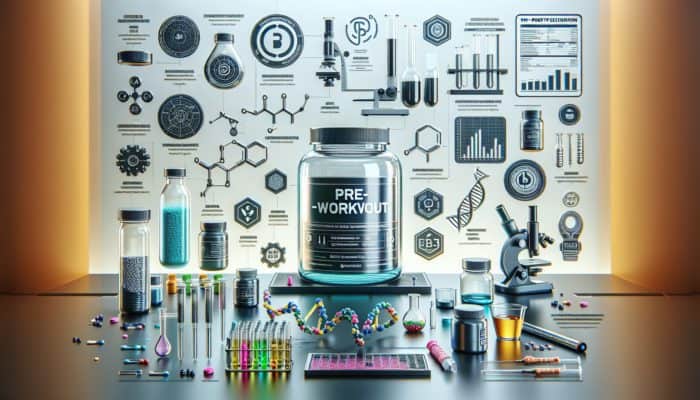Exploring the Vital Importance of Fitness Supplements for Optimal Performance
A Comprehensive Guide to Popular Fitness Supplements

In the dynamic world of fitness, supplements serve a fundamental purpose, providing critical support to both competitive athletes and fitness enthusiasts. With an extensive range of options available, some supplements have gained a reputation for their effectiveness and popularity in helping individuals achieve their fitness goals. Notable supplements in this category include protein powders, branched-chain amino acids (BCAAs), and creatine, each designed to fulfill specific roles tailored to various fitness objectives.
- Protein Powders: Essential for muscle recovery and growth, protein powders are indispensable for those aiming to increase their protein intake effectively.
- BCAAs: These vital amino acids are instrumental in reducing muscle soreness and fatigue during workouts, making them especially popular among endurance athletes.
- Creatine: Renowned for its ability to enhance strength and power output, creatine is extensively utilized in high-intensity training environments.
- Vitamins and Minerals: These vital micronutrients play an essential role in maintaining overall health and bodily functions, effectively addressing any dietary deficiencies.
- Pre-Workout Supplements: Specifically formulated to boost energy and focus, these products typically contain stimulants and other performance-enhancing ingredients.
- Omega-3 Fatty Acids: Celebrated for their anti-inflammatory properties, which can aid in recovery and promote joint health.
- Glutamine: This amino acid supports recovery and enhances immune function, particularly beneficial after strenuous workouts.
- Fat Burners: These supplements are designed to boost metabolism and assist in weight loss endeavors.
Collectively, these supplements foster muscle growth, enhance recovery, and elevate energy levels, enabling individuals to adopt a comprehensive approach to achieving their unique fitness aspirations.
Understanding the Mechanisms Behind Supplement-Enhanced Fitness Performance
While supplements are not a silver bullet, they can significantly improve workout performance and facilitate the attainment of fitness goals when utilized correctly. These products help satisfy nutritional needs that a standard diet may not fully address. For example, athletes engaged in rigorous training often necessitate additional protein to support muscle repair and recovery. Similarly, individuals participating in intense workout routines may discover that BCAAs effectively reduce fatigue during their sessions.
Moreover, the appropriate supplements can complement a balanced diet effectively. While whole foods should always be the primary source of nutrition, supplements serve as functional enhancements, helping individuals reach their specific objectives. For instance, pre-workout supplements can provide the essential boost required for demanding workouts, while post-workout protein shakes can expedite recovery.
It is crucial to acknowledge that supplements yield their best results when integrated into a comprehensive fitness strategy that includes proper nutrition, consistent training, and sufficient rest. This synergy not only maximizes performance but also contributes to overall well-being, empowering individuals to realize their fitness ambitions.
Determining the Optimal Timing and Dosage for Supplements
Understanding the appropriate timing and dosage of supplements is vital for unlocking their full potential. Each supplement operates most effectively when consumed at specific intervals in relation to workouts and daily routines. For example, protein supplements are typically taken post-workout to promote muscle repair, while pre-workout products are best ingested approximately 30 minutes before exercising to optimize energy levels.
Dosage can significantly fluctuate based on individual objectives, body weight, and the intensity of workouts. For instance, while the standard recommendation for creatine supplementation is between 3-5 grams daily, some athletes may engage in loading phases that temporarily increase intake for more rapid results. Similarly, protein consumption can vary from 1.2 to 2.2 grams per kilogram of body weight, contingent on training intensity and specific goals.
Furthermore, it is essential to be aware of potential risks linked to improper usage. Excessive intake can lead to unfavorable effects, such as digestive discomfort or stress on organs. Therefore, consulting healthcare professionals or nutritionists to establish personalized timing and dosage is consistently advisable. This tailored approach ensures that supplements enhance performance without compromising health.
Identifying Risks and Side Effects Associated with Supplements

Despite the numerous benefits supplements can offer, they are not without inherent risks. Some individuals may encounter side effects, particularly when using supplements without appropriate guidance. Common side effects include digestive distress, headaches, and potential allergic reactions. Moreover, specific supplements may interact with medications, introducing additional concerns.
For example, elevated caffeine levels found in many pre-workout supplements can result in increased heart rates and anxiety, particularly for individuals sensitive to stimulants. Likewise, while creatine is beneficial for many, it may lead to water retention and kidney stress if misused or consumed excessively.
This underscores the importance of consulting healthcare professionals before initiating any supplement regimen. They can provide personalized guidance and assist individuals in navigating potential interactions or contraindications. By remaining informed and proactive, users can enjoy the benefits of supplements while minimizing risks, fostering a healthier approach to fitness enhancements.
Assessing the Quality and Effectiveness of Supplements
The supplement market is vast, and not all products are created equally. Evaluating the quality and effectiveness of supplements is crucial for ensuring safety and achieving desired outcomes. A key aspect is looking for third-party testing and certifications from reputable organizations, which can verify that a product meets its label claims regarding purity and potency.
Furthermore, consumers should familiarize themselves with ingredient lists, avoiding products laden with fillers or artificial additives. Transparency from brands regarding sourcing and formulation is also a critical indicator of quality. Additionally, reviewing scientific studies pertaining to specific supplements can provide insights into their effectiveness and potential advantages.
Moreover, user reviews can offer valuable perspectives on how well a product has performed for others. However, distinguishing reliable sources of information is essential, as many testimonials may be biased or influenced by marketing tactics. By prioritizing quality and efficacy, individuals can make informed choices, ensuring that their supplement selections align with their fitness goals and overall health.
Insights from Experts on Supplements in Fitness Influencer Diets
How Fitness Influencers Select Their Supplements

Fitness influencers often choose their supplements based on a blend of personal experiences, research, and collaborations with brands. This decision-making process significantly influences their followers, making it essential for influencers to make well-informed choices. Influencers typically assess various factors when determining their supplement preferences, including:
- Personal Experience: Many influencers begin with products they have personally tried and found effective.
- Research and Evidence: They actively seek scientifically validated information regarding the benefits and risks associated with supplements.
- Brand Reputation: Collaborations with trusted brands may sway their choices, prioritizing quality and reliability.
- Ingredient Transparency: Influencers generally favor supplements with clear labeling and no hidden ingredients.
- Follower Feedback: Engagement with their audience can guide influencers on preferences or concerns about particular products.
- Trends and Popularity: Current fitness trends may also influence their supplement choices, aligning with what their audience finds appealing.
By navigating these factors, influencers can ensure they promote products that resonate with their values and audience, fostering trust and credibility within their communities.
Ethical Considerations in Supplement Use for Influencers
The use of supplements in fitness influencer diets raises significant ethical considerations, particularly regarding transparency and responsibility. Influencers hold considerable power to shape perceptions of health and fitness, making it crucial for them to advocate for safe and ethical supplement use. A primary ethical concern is the portrayal of products; influencers should refrain from making exaggerated claims about the effectiveness of supplements, instead focusing on realistic outcomes.
Another important issue is the impact of supplement promotions on body image and self-esteem. As many individuals look to influencers for guidance, it is imperative to promote body positivity and the significance of a balanced approach to fitness, rather than implying that supplements provide a quick fix for achieving ideal body types.
Moreover, influencers must be transparent about their partnerships with supplement brands. Disclosing sponsored content helps maintain trust with their audience, ensuring followers are aware of potential biases in recommendations. By emphasizing ethical practices, influencers can contribute to a more responsible fitness culture that prioritizes the health and well-being of their followers.
The Role of Supplements in Influencer Marketing Strategies
Supplements have emerged as a cornerstone in the realm of fitness influencer marketing, serving as a lucrative channel for brand partnerships and collaborations. Influencers frequently leverage their platforms to promote specific products, which can significantly sway their followers’ purchasing decisions. This relationship is mutually beneficial; brands gain visibility, while influencers enhance their credibility by aligning with reputable products.
Many influencers share detailed routines involving supplements, illustrating how these products integrate into their fitness lifestyles. This transparency and relatability can drive engagement and encourage followers to explore the promoted supplements. However, influencers must find a balance between brand collaborations and authenticity, ensuring they genuinely believe in the products they endorse.
Additionally, the rise of social media has amplified the reach of supplement marketing. Influencers utilize platforms like Instagram, TikTok, and YouTube to create visually captivating content that highlights the benefits of the supplements they use. These platforms provide an interactive space where followers can engage with influencers, ask questions, and seek guidance. As a result, supplements play a crucial role not only in marketing but also in shaping trends within the fitness community.
How Followers Can Assess the Effectiveness of Influencer-Recommended Supplements
When evaluating the effectiveness of supplements endorsed by influencers, it is vital to adopt a thoughtful and informed approach. First and foremost, it is crucial to seek scientific evidence that supports the claims made about the supplements. This may include studies demonstrating their efficacy, along with user reviews reflecting diverse experiences.
Followers should also closely examine ingredient lists to ensure they understand what they are consuming. Transparency regarding ingredient sourcing and product formulation can indicate a higher-quality supplement. Additionally, followers should consider the influencer’s background; those with relevant fitness or nutritional qualifications may provide more reliable recommendations.
Engaging with fellow consumers can also yield valuable insights. Online forums, social media discussions, and product review sites can provide a broader perspective on the supplement’s effectiveness. By adopting a discerning mindset and consulting multiple sources, followers can make informed decisions about which supplements to incorporate into their fitness regimens, ensuring they align with their health objectives.
Investigating the Impact of Supplements on Fitness Performance
Enhancing Workout Results with Supplements
Supplements have a significant impact on workout performance, addressing various aspects of physical activity. Products such as pre-workout formulas can provide an energy boost, allowing individuals to feel invigorated and focused during their sessions. These formulas typically contain stimulants like caffeine, which can enhance alertness and endurance, enabling individuals to undertake more challenging workouts.
BCAAs, in particular, are critical for minimizing muscle fatigue. By alleviating the soreness that often follows intense training, BCAAs empower athletes to train harder and more frequently, ultimately promoting muscle growth and endurance. Additionally, creatine enhances performance by elevating strength and power output, especially in high-intensity activities. This results in enhanced outcomes during lifting or sprinting sessions, making it a favored choice among strength athletes.
Beyond individual performance, supplements can also facilitate recovery processes following a workout. For example, post-exercise protein supplements can aid in muscle repair and growth, allowing individuals to recover quickly for subsequent training sessions. Through these multifaceted advantages, supplements serve as powerful tools for maximizing fitness performance and achieving personal goals.
Research Findings on Supplement Effectiveness
The effectiveness of supplements varies considerably, with scientific research shedding light on their benefits and limitations. For certain supplements, such as protein and creatine, numerous studies provide clear evidence of their advantages. Protein supplementation has consistently been associated with improved muscle protein synthesis, aiding recovery and growth following resistance training. Similarly, creatine has been validated through extensive research demonstrating its ability to enhance strength and explosive performance in various athletic contexts.
However, it is essential to acknowledge that not all supplements are supported by solid scientific evidence. Some products may lack rigorous research or present inconclusive findings regarding their benefits. This disparity emphasizes the need for critical thinking when selecting supplements. Understanding the mechanisms through which certain supplements operate can empower consumers to make informed choices that align with their fitness objectives.
As scientific advancements continue, emerging research may reveal novel supplements or uncover additional benefits of existing ones. Staying informed about the latest studies can assist individuals in making educated decisions about utilizing supplements that have been proven effective and safe.
Recognizing Potential Risks and Side Effects of Supplements
While many supplements hold the potential to enhance performance and support fitness goals, they can also pose risks if misused. Overuse or improper usage may lead to various adverse effects that negatively impact health. Common side effects can manifest as digestive issues, such as bloating or diarrhea, particularly with excessive doses of protein or certain pre-workout ingredients.
Additionally, some supplements can foster dependencies or lead to overstimulation, especially those containing caffeine or other stimulants. This could result in increased heart rates or heightened anxiety. Furthermore, prolonged use of specific supplements may strain organs, particularly if proper hydration or dietary balance is neglected.
Individuals must heed their bodies’ signals and consult healthcare professionals when considering new supplements. Monitoring responses and adjusting usage according to personal tolerance can help minimize risks. By adopting a cautious and educated approach, users can enjoy the benefits of supplements while safeguarding their health and wellness.
Research-Based Insights on Supplements in Fitness Influencer Diets
Key Findings on Protein Supplements
Protein supplements rank among the most thoroughly researched products in the fitness industry, showcasing numerous benefits for muscle growth and recovery. A plethora of studies validates that protein supplementation can significantly enhance muscle protein synthesis, leading to increased muscle mass over time. This is particularly vital for individuals engaged in strength training or high-intensity workouts.
Significant research findings on protein supplements include:
- Muscle Recovery: Studies indicate that consuming protein post-exercise accelerates recovery and mitigates muscle soreness.
- Increased Muscle Mass: Research reveals that individuals consuming adequate protein experience greater gains in lean muscle compared to those relying solely on food sources.
- Satiety and Weight Management: Protein can enhance feelings of fullness, aiding in appetite regulation and weight management.
- Performance Improvement: Protein supplementation can elevate athletic performance in both endurance and strength sports.
These consistent findings underscore the importance of incorporating sufficient protein, whether through whole foods or supplements, to support training goals and overall health.
Understanding the Role of BCAAs in Supporting Fitness Goals
Branched-chain amino acids (BCAAs) have gained traction among athletes for their contributions to achieving fitness objectives. These essential amino acids—leucine, isoleucine, and valine—are particularly effective in reducing muscle soreness and fatigue, making them invaluable during intense training.
Research indicates that BCAAs can help minimize exercise-induced muscle damage, allowing individuals to maintain higher training volumes without compromising recovery. They also significantly promote muscle protein synthesis, crucial for recovery and growth post-workout.
Furthermore, BCAAs may mitigate fatigue during prolonged exercise by influencing neurotransmitter levels in the brain. This can lead to improved endurance and performance, making BCAAs a preferred choice for athletes engaged in endurance sports. Overall, incorporating BCAAs into a fitness regimen can facilitate recovery and enhance training efficiency.
Exploring How Creatine Enhances Athletic Performance
Creatine stands out as one of the most researched supplements, celebrated for its effectiveness in enhancing athletic performance. This compound, naturally occurring in the body, is vital for energy production during high-intensity activities. Supplementing with creatine has been shown to increase strength and power output, making it particularly beneficial for weightlifting, sprinting, and other explosive sports.
Key findings regarding creatine supplementation include:
- Strength Gains: Research consistently demonstrates that creatine supplementation leads to significant improvements in maximal strength and power.
- Muscle Mass Increase: Studies indicate that individuals using creatine tend to gain more muscle mass compared to non-users.
- Enhanced Recovery: Creatine may support recovery by reducing muscle cell damage and inflammation following intense workouts.
- Brain Health: Emerging research suggests that creatine may also possess neuroprotective effects, indicating potential benefits beyond physical performance.
These findings affirm creatine’s status as a foundational component of many athletes’ supplement regimens, supporting both performance and recovery.
Effective Strategies for Integrating Supplements into a Balanced Diet
Best Practices for Safe Supplement Use
Successfully incorporating supplements into a balanced diet requires careful consideration and planning. Best practices include consulting with a healthcare provider before starting any supplement regimen to ensure safety and effectiveness. This personalized guidance can help individuals understand their unique nutritional needs and how supplements can address specific deficiencies.
Meticulously reading labels is another crucial practice. Consumers should be aware of the ingredients in their supplements and select products that align with their dietary preferences and health objectives. Additionally, prioritizing whole foods is essential, ensuring that supplements complement rather than replace nutrient-rich options.
Finally, tracking supplement intake can help evaluate its impact on health and fitness goals. Maintaining a log can assist individuals in determining what works best for their bodies and making necessary adjustments. By adhering to these best practices, individuals can maximize the benefits of supplements while maintaining a holistic approach to nutrition.
Guidelines for Choosing Quality Supplements
Selecting high-quality supplements can significantly affect their effectiveness and safety. One of the primary considerations is to seek products that have undergone third-party testing; this ensures that the contents match the label and are free from contaminants. Reputable brands often provide transparency regarding their testing processes and ingredient sourcing.
Understanding the ingredients is also vital. Consumers should familiarize themselves with key components, opting for supplements that utilize high-quality, bioavailable forms of nutrients. Moreover, avoiding products containing unnecessary fillers or artificial additives can enhance the supplement experience.
Researching brand reputations through customer reviews and industry feedback can offer insights into the reliability of specific products. Established brands with a history of quality and positive user experiences are often the safest choices. By prioritizing quality, individuals can ensure that their supplements contribute positively to their health and fitness journeys.
Balancing Supplements with Whole Foods for Optimal Nutrition
While supplements can provide valuable support in achieving fitness goals, they should not replace the essential benefits of whole foods. A balanced diet rich in fruits, vegetables, whole grains, and lean proteins is crucial for overall health and wellness. Ideally, supplements should fill nutritional gaps rather than serve as primary sources of nutrients.
For instance, while protein supplements can help meet daily protein requirements, they should complement a diet that includes whole food protein sources such as chicken, beans, or fish. Incorporating a diverse array of whole foods ensures that individuals receive not just macronutrients, but also essential vitamins, minerals, and phytonutrients that contribute to long-term health.
Additionally, timing is vital when incorporating supplements into meals. Consuming them alongside whole foods can enhance absorption and efficacy. By creating a balanced approach that prioritizes whole foods while strategically incorporating supplements, individuals can optimize their nutrition and effectively support their fitness endeavors.
Optimal Timing and Dosage Guidelines for Supplements
Understanding when and how much to take supplements is essential for maximizing their benefits. Different supplements have unique guidelines regarding timing and dosage that can influence their efficacy. For example, pre-workout supplements are generally taken 30-45 minutes before exercising to optimize energy and focus. Conversely, post-workout protein shakes should ideally be consumed within 30 minutes of completing a workout to facilitate muscle recovery.
Dosage recommendations vary depending on the specific supplement and individual goals. For instance, creatine supplementation often follows a loading phase of 20 grams per day for a week, followed by a maintenance dose of 3-5 grams daily. Conversely, BCAAs can be taken pre-, during, or post-workout, typically in a serving size of 5-10 grams.
Consulting product labels and healthcare providers for personalized recommendations is crucial. This ensures that individuals consume the appropriate amounts at the right times, maximizing the benefits of supplements while minimizing potential side effects. A well-planned timing and dosage strategy can enhance performance and recovery, paving the way for achieving fitness goals.
The Influence of Fitness Influencers on Supplement Trends
How Influencers Shape the Landscape of Supplement Use
Fitness influencers wield substantial power in shaping supplement trends, often guiding their followers towards specific products through personal endorsements. Their influence can significantly elevate the popularity of particular supplements, creating trends that resonate throughout the fitness community.
Influencers frequently share their experiences with supplements, demonstrating how these products fit into their fitness routines. This can ignite heightened interest in certain items, especially if the influencer boasts a large following. Additionally, they may collaborate with brands to promote the latest supplement innovations, further impacting consumer choices.
Their presentations often include reviews, testimonials, and demonstrations, providing followers with relatable content that fosters engagement. As influencers highlight their supplement regimens, they cultivate a sense of community and activism around specific products, motivating others to explore new options. This dynamic can foster authentic connections but also underscores the necessity for responsible promotion and ethical considerations in marketing.
The Role of Social Media in Shaping Supplement Choices
Social media platforms play a central role in how fitness influencers connect with their audience, significantly affecting supplement choices. With the rise of visually-driven platforms like Instagram and TikTok, influencers can showcase their supplement routines in engaging ways that captivate their followers.
These platforms enable influencers to share not only the benefits of products but also their personal experiences, fostering a sense of trust and relatability. Followers often turn to influencers for insights on the latest trends or products, leading to increased popularity for specific supplements.
Social media also serves as a platform for discussions and feedback among users. Followers can comment on posts, ask questions, and share their experiences, creating a community around specific supplements. Influencers can then respond and adapt their messaging based on this feedback, reflecting their audience’s preferences and concerns. This interactive nature of social media amplifies the influence of fitness trends and the accompanying supplements.
- Instagram: Ideal for sharing visually engaging content, workout routines, and supplement recommendations.
- YouTube: Popular for in-depth product reviews and educational content related to fitness and nutrition.
- TikTok: A rapidly growing platform where short, engaging videos can quickly highlight supplement benefits.
- Facebook: Community-driven groups provide a space for discussions and sharing experiences regarding supplements.
Through these platforms, influencers can significantly shape follower perceptions and choices regarding supplements, underscoring the importance of transparency and responsibility in their recommendations.
The Importance of Influencer Credibility in Supplement Marketing
Credibility is a fundamental aspect of effective supplement promotion for fitness influencers. Followers are more likely to trust recommendations from influencers who demonstrate knowledge and transparency about the products they advocate. This trust is built through several key practices.
First, influencers should clearly and transparently disclose any partnerships with supplement brands. This honesty nurtures trust among followers and reinforces the influencer’s integrity in their recommendations. Additionally, providing evidence-based information about the supplements—such as research insights or personal experiences—can enhance credibility.
Moreover, influencers who prioritize their health and fitness by utilizing supplements themselves are often perceived as more credible. Sharing authentic stories about their journeys, challenges, and successes fosters relatability and strengthens the connection with their audience.
Ultimately, credibility transcends mere marketing; it involves building genuine relationships with followers through honesty, knowledge, and shared experiences. By maintaining a strong sense of integrity, fitness influencers can effectively promote supplements while fostering trust and loyalty within their communities.
Future Perspectives on Supplements in Fitness Influencer Diets
Emerging Trends Influencing Supplement Use
As the fitness landscape continues to evolve, new trends in supplement use are surfacing, reflecting changing consumer preferences and priorities. A notable trend is the increasing demand for personalized supplement formulations. With advancements in technology, individuals can now receive tailored recommendations based on their specific nutritional requirements, workout regimens, and health objectives.
Another trend gaining momentum is the rise of plant-based supplements. As more individuals adopt vegan or vegetarian lifestyles, the demand for plant-based sources of protein, omega-3s, and other nutrients is on the rise. Brands are responding by developing innovative products that cater to these preferences, ensuring that everyone can find suitable options for their diets.
Moreover, there is a growing emphasis on transparency and sustainability within the supplement industry. Consumers are increasingly favoring brands that prioritize ethical sourcing, environmentally friendly packaging, and clear ingredient labeling. This trend reflects a broader shift toward conscious consumerism in the health and wellness sector.
These emerging trends indicate a dynamic landscape for supplements, offering exciting opportunities for innovation and growth. As consumers become more educated and discerning, the industry must adapt to meet their evolving needs.
Technological Advancements Shaping Supplement Choices
Technology is poised to significantly influence supplement choices in the future, enhancing the personalization and efficacy of supplementation. Innovations such as apps and wearable devices are already paving the way for individuals to monitor their nutrient intake, exercise performance, and overall health.
For instance, fitness apps can analyze users’ dietary habits and recommend specific supplements to fill nutritional gaps based on personalized data. Wearable devices can track physical activity levels and recovery rates, providing valuable insights into when and how to supplement effectively. This data-driven approach enables individuals to make informed decisions regarding their supplement use.
Furthermore, advancements in artificial intelligence and machine learning may lead to the creation of customized supplement formulations tailored to individual needs. Imagine a future where individuals receive personalized supplement packets delivered to their door, designed specifically for their fitness goals and health profiles.
As technology continues to progress, it promises to make supplement use more personalized, efficient, and effective, ultimately enhancing the health and fitness journeys of individuals globally.
The Role of Education in the Future of Supplement Use
Education will be crucial in shaping the future of supplement use, empowering individuals to make informed choices that support their health and fitness objectives. As awareness grows regarding the importance of nutrition and supplementation, the demand for accurate information is increasing.
Fitness influencers, nutritionists, and healthcare professionals must prioritize educating their audiences about the benefits and potential risks associated with supplements. This includes providing evidence-based information, addressing misconceptions, and promoting critical thinking when evaluating products.
Moreover, educational initiatives can empower individuals to understand their specific nutritional needs and how supplements can fit into their overall health strategies. Workshops, webinars, and social media campaigns can serve as valuable resources for disseminating knowledge and fostering informed decision-making.
By prioritizing education, the fitness community can cultivate a culture of responsibility and awareness surrounding supplement use. This proactive approach ensures that individuals can navigate the supplement landscape safely and effectively, maximizing benefits while minimizing potential risks.
Frequently Asked Questions about Supplements in Fitness
What Are the Most Common Supplements Used in Fitness?
Common supplements include protein powders, BCAAs, creatine, pre-workouts, and omega-3 fatty acids, each serving distinct functions in enhancing performance and recovery.
How Do I Choose the Right Supplements for My Fitness Goals?
Selecting the appropriate supplements depends on your specific objectives, dietary requirements, and activity levels. Consulting with a healthcare provider can help tailor recommendations to your individual needs.
Are Supplements Necessary for Everyone?
Supplements are not essential for everyone. Many individuals can meet their nutritional needs through a balanced diet; however, supplements can assist those with specific deficiencies or high training volumes.
Can Supplements Replace Whole Foods in My Diet?
No, supplements should complement a balanced diet, not substitute for whole foods. Whole foods provide vital nutrients that supplements may lack.
What Are the Risks Associated with Taking Supplements?
Risks include potential side effects, interactions with medications, and overuse. Consulting with a healthcare professional can help mitigate these risks.
How Can I Ensure the Quality of My Chosen Supplements?
Look for third-party testing, reputable brands, and transparency in ingredient sourcing to guarantee the quality and safety of supplements.
When Is the Best Time to Take Supplements?
Timing varies by supplement; for example, protein is typically taken post-workout, while pre-workout formulas should be consumed before exercising.
Do Fitness Influencers Promote Effective Supplements?
While many fitness influencers share effective supplements, followers must research products and seek evidence-based information to make informed choices.
How Can I Evaluate Supplements Recommended by Influencers?
Assess influencer-recommended supplements by seeking scientific evidence, reading user reviews, and checking ingredient transparency to determine their effectiveness and safety.
What Is the Role of Education in Supplement Use?
Education empowers individuals to make informed decisions about supplements, promoting responsible use and a comprehensive understanding of health and nutrition.
Connect with us on Facebook!
The Article Supplements in Fitness Influencer Diets: The Universal Guide appeared first on https://athleticsupplement.com
The Article Supplements in Fitness Influencer Diets: Your Essential Guide Was Found On https://limitsofstrategy.com



































